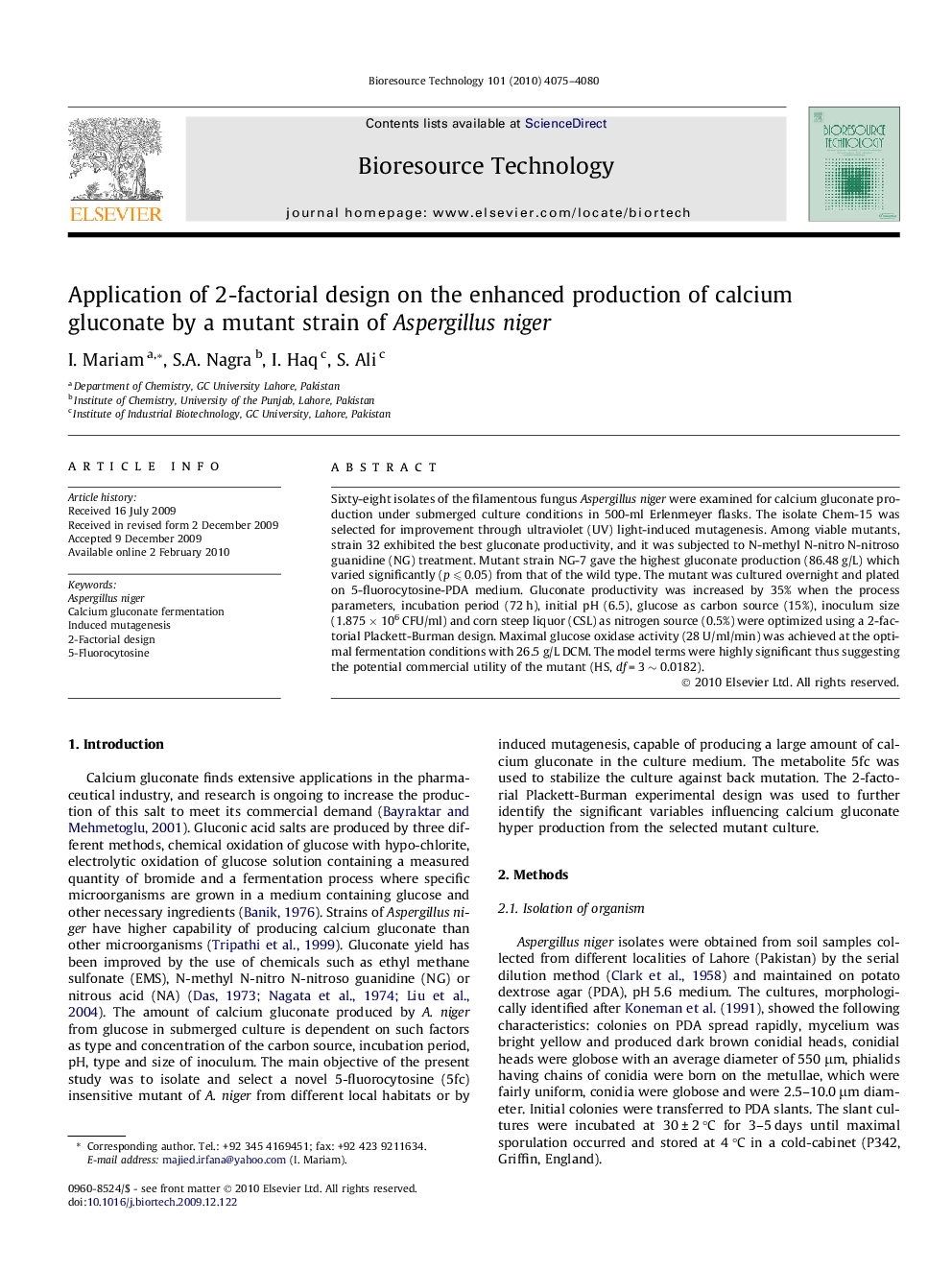| Article ID | Journal | Published Year | Pages | File Type |
|---|---|---|---|---|
| 683561 | Bioresource Technology | 2010 | 6 Pages |
Sixty-eight isolates of the filamentous fungus Aspergillus niger were examined for calcium gluconate production under submerged culture conditions in 500-ml Erlenmeyer flasks. The isolate Chem-15 was selected for improvement through ultraviolet (UV) light-induced mutagenesis. Among viable mutants, strain 32 exhibited the best gluconate productivity, and it was subjected to N-methyl N-nitro N-nitroso guanidine (NG) treatment. Mutant strain NG-7 gave the highest gluconate production (86.48 g/L) which varied significantly (p ⩽ 0.05) from that of the wild type. The mutant was cultured overnight and plated on 5-fluorocytosine-PDA medium. Gluconate productivity was increased by 35% when the process parameters, incubation period (72 h), initial pH (6.5), glucose as carbon source (15%), inoculum size (1.875 × 106 CFU/ml) and corn steep liquor (CSL) as nitrogen source (0.5%) were optimized using a 2-factorial Plackett-Burman design. Maximal glucose oxidase activity (28 U/ml/min) was achieved at the optimal fermentation conditions with 26.5 g/L DCM. The model terms were highly significant thus suggesting the potential commercial utility of the mutant (HS, df = 3 ∼ 0.0182).
